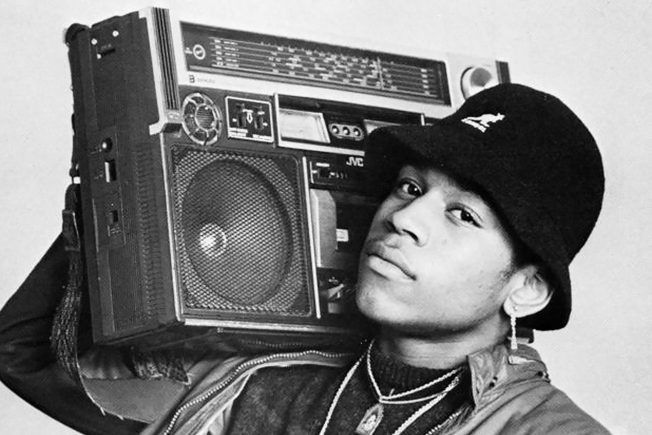Hip-hop Subculture as a Media Phenomenon
- October 13, 2025
- 0
The article examines hip-hop as a dynamic media phenomenon within youth subcultures, exploring its systemic communication characteristics and rhizome-like structure.
The article examines hip-hop as a dynamic media phenomenon within youth subcultures, exploring its systemic communication characteristics and rhizome-like structure.

Subcultures are of significant interest to researchers in the humanities. The processes of digitalization and mediatization, when media network activity and media activities globally affect basic social institutions, suggest a systematic study of subcultures in the context of communication theory. It is noted that the formation and further stability, up to the rooting in the general culture, is characteristic of the youth subculture of hip-hop. The authors of the article set a strategic goal to find out, on the basis of theoretical and methodological approach, due to what systemic (formal and content) characteristics hip-hop has spread among young people, what communicative characteristics of this subculture determined its flourishing in the period of digitalization.
Among the tasks that were solved are the following: characterization of the hip-hop industry as a network media phenomenon is given, the dynamics of its changes at the level of subsystems is considered. The authors for the first time put forward and proved the hypothesis that hip-hop reflects all five stages of development of the system of mass communications. The analysis reveals the rhizome-like nature of the hip-hop subculture as the main reason for the systemic stability of this media phenomenon.
The article comprehensively considers the totality of components of the hip-hop subculture as effective communicative practices: graffiti, breakdancing, DJing, rap (rap battles). The tendency of active entry of some subcultural processes and products into mass culture is noted. The peculiarities of hip-hop slang are outlined. The article brings the mediacommunication approach into the agenda of further scientific research of youth subcultures (primarily hip-hop) and actualizes it.
Bringing up the issue of youth subcultures is relevant in today’s context when the generation of digital youth (born at the turn of the 20th-21st centuries) is coming of age, starting to contradict the ruling decision-maker generation, whose development was not associated with internet technologies. This is not the usual, well-documented generational conflict; it is a clash of two communication matrices: “subject-subject” (network) and “subject-object” (one-directional). The first formed in the multidimensional space of digital media, the second in the linear paradigm of traditional broadcasting media, primarily TV. Youth subcultures embody the eternal desire of the young to oppose the older generation, and in the media ecosystem era, they acquire new tools, allowing them to root in mass culture, influence global trends.

This is especially true for the hip-hop subculture, which attracts the attention of researchers of various scientific specialties worldwide. Since the 1990s, Hip-hop-based Education has been actively developing in the USA, including special thematic educational programs in universities.
It should be noted that viewing hip-hop subculture in the context of communication theory should be seen as a media phenomenon. Philosophers, particularly M. Mamardashvili, explain a phenomenon as “an entity possessing a sensory fabric formation of consciousness representing in the objective splitting of mental understanding articulation and from the being in which we cannot shift to representation.” In other words, this is about being inside a phenomenon that is consciously conceptualized by a subject through the experience of a modeled reality. Teenagers of the digital age are connected to a networked, multi-directional communication field (from Twitch and YouTube to social networks), they undergo primary socialization outside “subject-object” television, which didn’t fit into the information agenda of global youth interactivity.
The notion of “media phenomenon” must be clarified. A media phenomenon is not merely a communication device but something that exists and develops within media space (transmediality, convergence, multimedia). Hip-hop as a media phenomenon has a system structure where communicative subsystems (rap, breaking, graffiti, DJing) exist relatively autonomously. It is known that the stability of a system is given by the relative mobility of its subsystems, combining inertia, recoverability, and plasticity. The aggregation of hip-hop subsystems, covering music, dance, art, poetry, and vocalization, scales the system, giving it semantic volume. All communicative practices are united in the hip-hop process.
We’ll test the hip-hop media phenomenon using the synchronous-diachronous typology of mass communication systems (MCS) by Y.P. Budantsev with additions by M.N. Pryakhin and indicate how these systems’ features manifested and evolved.
MCS-1 is a carnival where everyone can participate. In the 1970s, hip-hop was a street carnival culture in the USA. MCS-2 sees live communication as crucial, transforming into an information situation—subject to object. Hip-hop fits in this system through street performances and gatherings. MCS-3 alienates the messenger from the audience; hip-hop’s essence and aesthetics do not fit here. MCS-4 involves mass information dissemination exclusive to some. Traditional media might ignore hip-hop, lacking democratic values. Hip-hop stays underground in state-controlled media landscapes.
The modern mass communication system (MCS-5), based on digitalization and new technologies, is interactive, allowing comprehensive cultural interaction. MCS-5, like MCS-1, allows equal participation through interactivity and accessibility. Hip-hop represents this system’s rhizome-like structure, with no structural center, in contrast to other subcultures.
Graffiti (from Italian graffiato) is street image communication of hip-hop and an extrapolation of sociocultural practices. Originally a method of marking territory within a subculture, graffiti expected the artists to activity draw on its symbolic nature.
DJing—another hip-hop subsystem—is about electronic reproduction of recorded music for a live audience, accentuating the DJ’s technical skills and real communication with the crowd. The mainstream adoption shows its transcendence from subcultural aesthetics.